Getting people to see your content isn’t getting any easier. From an ever-changing SERP, crowded social platforms, and AI-generated content flooding the scene, there’s a lot of competition for attention.
And that’s only one major challenge businesses face when it comes to content marketing in 2025. We’re breaking down the biggest content marketing hurdles and how to clear them with ease.
Contents
- Publishing content that converts
- Knowing your audience
- Differentiating content from the competitors
- Creating content consistently
- Producing high-quality content
- Aligning content with the buyer’s journey
- Promoting your content effectively
The biggest content marketing challenges in 2025
We’re diving into the biggest content marketing challenges businesses are facing and sharing what you can do about them to see the best results all year long.
Challenge #1: Creating content that converts users
According to Content Marketing Institute’s research, the top challenge marketers face with content creation is getting users to take a desired action.
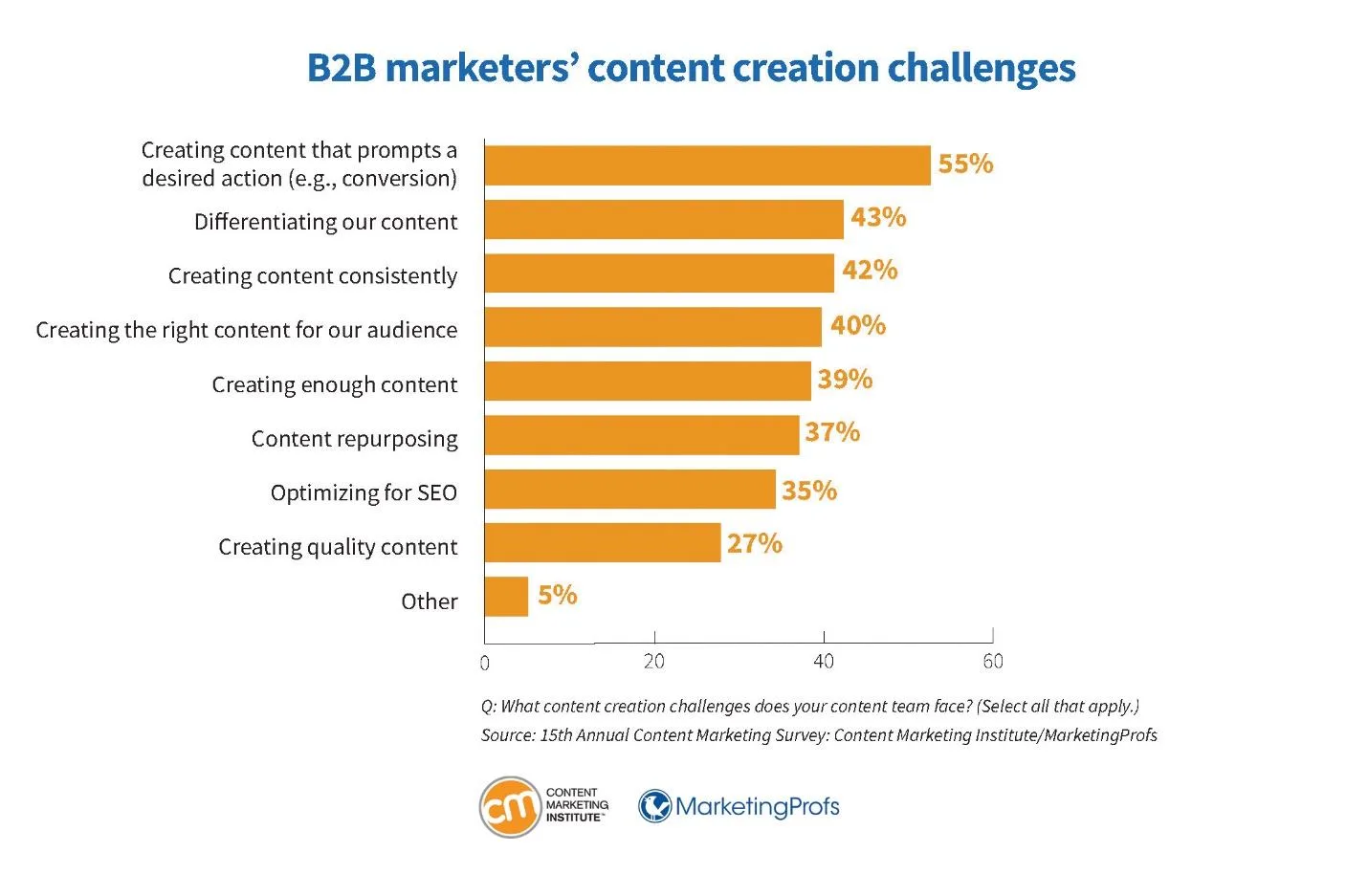
You can write blog posts and post on social media all day, but if no one becomes a paying customer, there isn’t much point.
Some of your content will simply exist just for entertainment’s sake, and that’s okay. But you’re running a business, so some of it needs to get people to convert.
Here’s how you can overcome this challenge:
Address the needs and pain points of your audience
Some people wake up thinking they need cold-pressed juice. Others wake up thinking they want to eat something healthy but don’t have time to cook. Your content should tap into those real-life desires.
Here’s the difference:

The first statement is informative, but the second one speaks to a specific need. Shift your message to why your product or service helps, and that’s when you’ll see people take action.
Use headlines that hook people
Think of your headlines like a storefront. If your signage is bland, people walk by. But if it’s compelling or sparks curiosity, they step inside.
See the difference:

Test different headlines and see what resonates with your audience. Try formulas like these:
- Question-based: Tired of Feeling Bloated? This Juice Might Be the Fix
- List-based: 5 Superfoods That Make Your Skin Glow (And How to Get Them in One Drink)
- Curiosity-driven: We Tried Mixing Beets and Pineapple: Here’s What Happened
Use calls-to-action that are easy to say “yes” to
You’ve likely read an article, got to the end, and then just left. That’s what happens when there’s no clear next step.
Your content needs calls-to-action (CTAs) as a natural next step. But not always in a pushy, “buy now” way.
Let’s say you post a blog on how to naturally boost your immunity with juice. Instead of ending it with a friendly sign-off, give people a reason to act. Say something like “Want to try an immunity-boosting juice? Order online and pick up in 15 minutes!”
✍️ Need help finding the perfect CTA? Free guide download >> The 42 Best Call to Action Phrases Ever (& Why They Work)
Challenge #2: Knowing your audience
Some businesses think they know their customers. The owner of a juice bar might think “We sell smoothies, so our target audience is health-conscious people.”
But that’s too broad, and it’s not that simple. Are they busy professionals grabbing some juice before work? Gym-goers looking for a protein boost? Different people need different messages.
Here’s how to get inside your audience’s head:
Do audience research
Instead of making assumptions, do some actual research. And your content will be better for it.
Look at the customers coming through the door. See who’s placing orders online. Are they mostly young professionals? Students? Parents?
Check out the conversations in places like Reddit threads and Facebook groups. Scope out the reviews of your competitors to see what people are saying about products like yours.
🕵️♀️ Want to understand who you should target with your content marketing? Download the guide >> How to Find Your Target Audience [Simple Steps!]
Create buyer personas
Once you’ve gathered some info, create buyer personas. Map out who your actual audience is, so you can talk to them like real people.

Here’s an example for that juice bar: One persona could be “Fran, the Fitness Enthusiast.” She’s 30 years old and lives in the city. She regularly hits the gym at 6 a.m. and needs a smoothie right after. Fran also loves organic ingredients and reading about personal health.
When creating content for this persona, you’d talk about protein blends, superfoods, and the benefits of adding things like turmeric for recovery.
Use analytics to track audience engagement
If your content isn’t working, the analytics will tell you. Google Analytics, social media insights, and email open rates also tell a story. Which pages and posts get the most engagement?
Let’s say you post a reel about a new kale smoothie, but it flops. Meanwhile, a post about the best juice combos for glowing skin gets a lot of action. That’s a clue that your audience might care more about one thing over another. Adjust your choices for content accordingly.
Ask your audience for feedback
Nothing beats real conversations with your audience. Run a quick Instagram poll, ask for feedback at checkout, or include a one-question survey in your email newsletter.
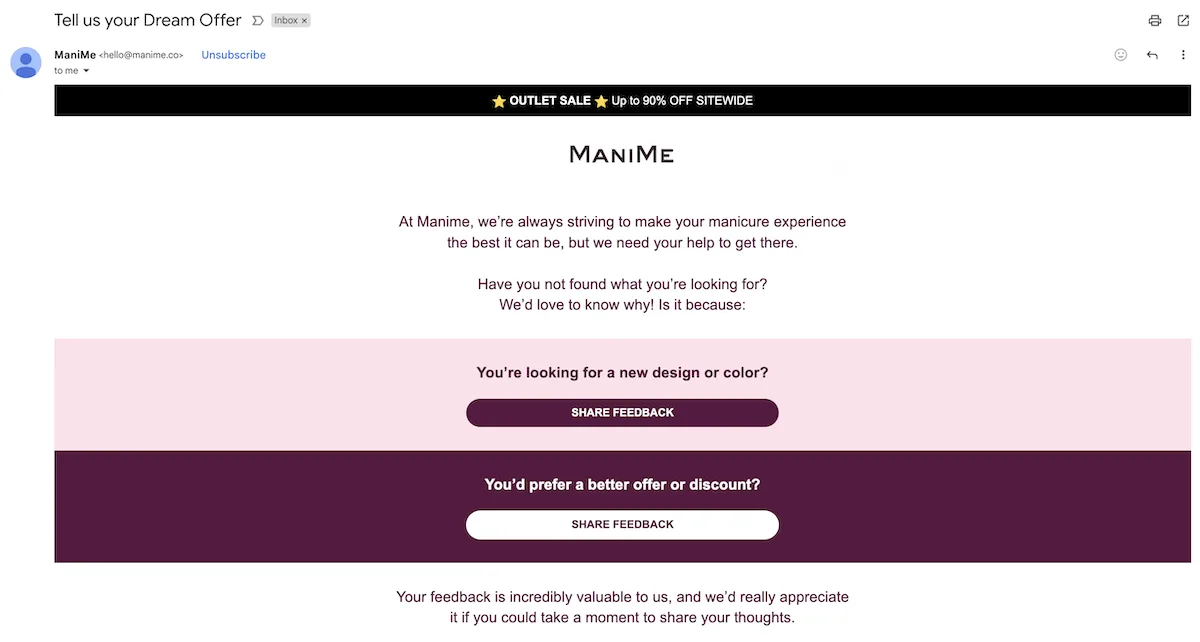
People may share their opinion if they feel like your brand is listening to them. Plus, their answers will give you content ideas.
Challenge #3: Differentiating content from the competitors
It’s not easy to stand out. The good news is you don’t need to do any crazy marketing tactics. You just need to be real with your content. Stories create emotional connections, and sharing your expertise builds trust. Do both, and people will remember your content.
Here’s how to start differentiating yourself:
Tell a story
Numbers and stats can help build credibility. But if you want your content to leave a mark, give storytelling a go. Research suggests that personal stories and gossip make up about 65% of our conversations. It’s just how people connect.
Let’s say you’re researching information about brakes on your car. As a reader, what do you think would be more memorable– a dry, factual post about brake repairs? Or an anecdote about a driver who avoided a major accident thanks to a quick visit to a trusted mechanic?
Make your content memorable by weaving in real stories. 55% of consumers are more likely to remember a story than a list of facts.
Now put yourself in the shoes of a mechanic shop owner. Instead of just saying that regular oil changes extend the life of an engine, bring it to life with a real example. Maybe you had a customer who hadn’t changed their oil in 15,000 miles, and their engine was about to fail. Sharing a story makes the point hit home.
And you’re not limited to just your experiences. A glowing customer testimonial about how your shop diagnosed a transmission issue when another shop couldn’t figure it out? That’s more convincing than simply talking about your services.
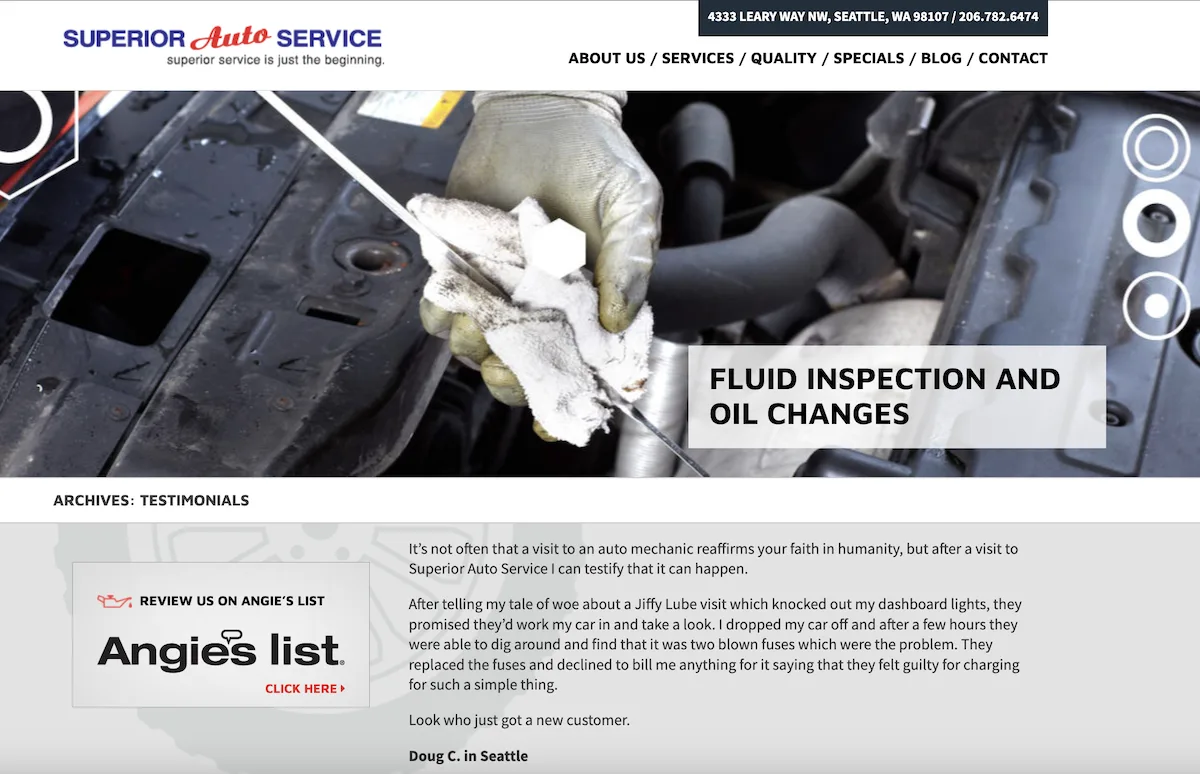
People remember stories more than a list of benefits. If someone hears about how your shop helped a stranded driver get back on the road in time for a job interview, that sticks. And when they eventually need car repairs, guess who they’ll think of? Hint: you.
Give away knowledge and assets
Some businesses keep their knowledge locked up, so to speak. They’re afraid that customers won’t need them if they reveal too much. But people want to see that you’re an expert.
And the best way to show them? Give them real, valuable insights.
Running that mechanic shop, you already know most car maintenance content out there is predictable. So, offer something people aren’t seeing out there. Maybe a breakdown of how to spot shady repair shops, or an insider’s guide on which warning lights need immediate attention and which ones can wait.
Love free stuff? So does everyone else.
A downloadable guide, like a DIY road trip safety checklist or a printable maintenance log for tracking oil changes and tire rotations, gives people something practical.
Sharing knowledge doesn’t mean giving away your business. It proves you know your stuff!
Challenge #4: Creating content consistently
Consistency builds momentum and keeps your audience engaged. But who has time to brainstorm content ideas when you’re juggling so many other things?
That’s why you need a plan.
Develop a schedule and stick to it
If content is an afterthought for you, it probably won’t happen. So, block out time to plan, create, and post. Or hire someone to do it for you. Whether it’s twice a week or twice a month, consistency matters.
For a juice bar, that could mean every Monday is a post of behind-the-scenes video of your team prepping fresh fruit. Wednesdays are for sharing a customer’s favorite juice order with a fun caption. And on Fridays, you drop a weekend promo.
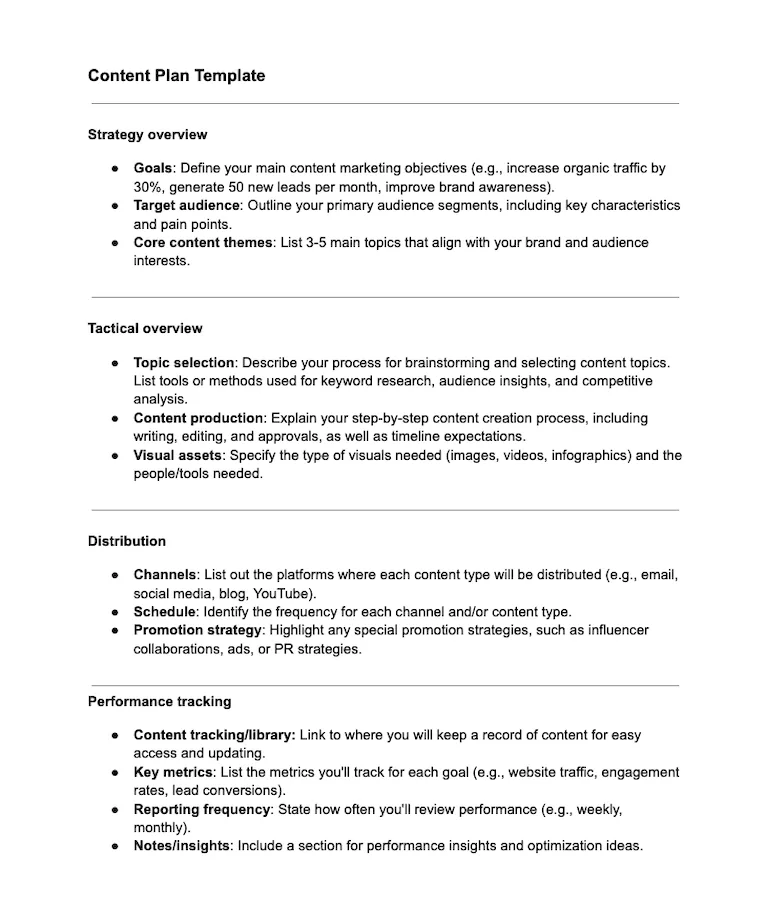
Get our content plan template to help you get started and stay on track.
Set aside dedicated time for content creation
There will be times when you’re waiting for a free moment to sit down and work on content, and it never comes.
So, set a time each week to create content in bulk for the future. Make it part of your routine, so it doesn’t feel like another last-minute task.
Develop a “bank” of ideas and log them as they come to you
Ever had a great idea for a piece of content, only to forget it in an hour? That’s why you need a bank/library/whatever to save ideas.
Use an app on your phone, a Google spreadsheet, or even a notebook to jot down ideas as they come up. Hearing that more and more customers are raving about your peanut butter acai bowl? Make a note to feature customer favorites.
Before you know it, you’ll have a list saved of content ideas to pick from.
Challenge #5: Creating high-quality content
If your content is just a slightly different version of what’s already floating around online, what’s the point? Your goal should be to rise above all the noise, but this is no easy feat–it’s a top challenge in the content world, per Statista.
Here’s how to create something that’s both useful and high quality:
Aim to create something better than what’s already out there
Before you start writing, Google the topic you’re about to cover. What’s ranking? What’s missing from the top-ranking content? Is anything outdated?
If every article about “Why your car won’t start” just lists the usual stuff (dead battery, no gas, etc.), you should go beyond that. Include real customer examples, troubleshooting steps, and when it’s time to call a mechanic.
The more helpful and detailed your content is, the better it will be by comparison.
Here’s an example:

Support claims with data and research
Anyone can say they’re the best mechanic in town, but proving it is what convinces people. So, support your content with real data, stats from trusted sources, and even case studies.
For example, instead of saying, “Tire pressure affects fuel efficiency,” you could say:
“Driving on underinflated tires can lower gas mileage by 3%, according to the US Department of Energy. That could cost you an extra $100 a year at the pump.”
Numbers can make your content credible.
Create detailed outlines for each piece
Ever start writing an article, only to have no idea where it’s going next? That’s what happens when you don’t have an outline prepared.
Give yourself (or whoever’s writing) some direction. Here are some steps to guide you in putting together a good outline:
- Research your topic. Collect data, stats, and insights that support your arguments.
- Determine the main theme. This will be the foundation of your outline.
- Break down the main points you want to cover.
- Organize ideas into a hierarchical structure.
- Arrange your ideas in a logical order that flows and makes sense.
- Fill in supporting details like examples and quotes from reputable sources.
Challenge #6: Aligning content with the buyer’s journey
The buyer’s journey describes the stages that a person might go through before buying, including awareness, consideration, and decision. It represents the relationship that potential customers have with your business, from learning about you all the way to becoming a customer.
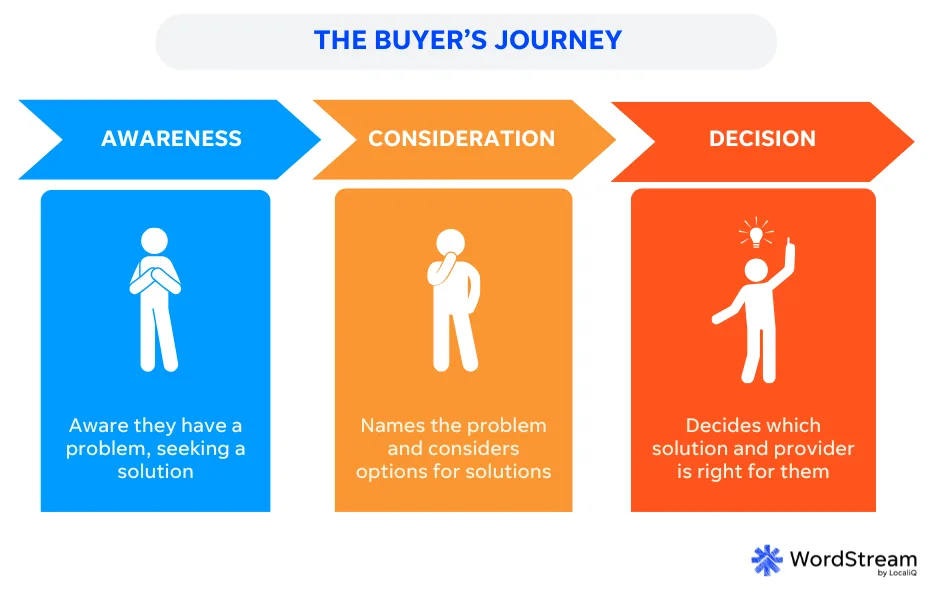
Some people are just discovering your juice bar for the first time. Others are weighing their options. And some are ready to buy but need a nudge. If you want your content to work, it should meet people where they are.
Awareness stage
At this stage, people aren’t searching for your business specifically. They’re looking for a solution to their needs. Maybe they’re Googling things like “best ways to boost energy naturally.”
Your job is to create content that answers these broad questions without pushing a sale. At this stage, your CTA should be light and educational, like “Follow us for more nutrition tips.”
Consideration stage
Now, they’re interested. They want a smoothie, but they’re weighing their options. Should they make their own at home or head to a local juice bar? This is where you show what makes your product the best choice.
Your CTA should nudge them forward, like “Check out our menu to find your perfect smoothie.”
Decision stage
At this stage, they’re ready to buy. But maybe they need one last reason to choose you. A one-time deal, a convenient option (like online ordering), or a little extra reassurance could do the trick.
No more soft-sell CTAs. This is where you give a push, like “Order now and pick up in 10 minutes!”
Challenge #7: Promoting your content effectively
The concept of promoting your content sounds easy. But the challenge is finding the best places and the time to do it.
Just like you’d do for creating content on a consistent basis, block out some time on a regular basis to promote in other places on the web.
Test out some of these distribution strategies to see what gets the best engagement. Then focus more of your promotion efforts on those.
- Repurpose in another format
- Brand all your visuals
- Optimize content for SEO
- Include links in relevant blog posts
- Post on social platforms
- Plug content on a podcast
- Syndicate your blog posts
- Share with your email mailing list
- Pitch your content to related newsletters
- Share on forums
- Partner with influencers
- Promote with banners, pop-ups, or sidebar CTAs
- Credit and tag your sources
- Encourage your employees to share
- Write a guest blog post
- Run paid ads
Turn these marketing strategies into action
Content marketing in 2025 is all about standing out. With more competition and people changing their expectations about what’s helpful, the businesses that win will be creating real connections. Now’s the time to take a hard look at your content strategy and make every post, article, and video count.
To recap, here are 17 ways to overcome the top content marketing challenges in 2025:
- Do audience research
- Create buyer personas
- Use analytics to track audience engagement
- Ask your audience for feedback
- Address the needs and pain points of your audience
- Use headlines that hook people
- Use calls-to-action that are easy to say “yes” to
- Tell a story
- Give away knowledge and assets
- Develop a schedule and stick to it
- Set aside dedicated time for content creation
- Develop a “bank” of ideas and log them as they come to you
- Aim to create something better than what’s already out there
- Support claims with data and research
- Create detailed outlines for each piece
- Meet people where they are in the buyer’s journey
- Test out distribution strategies







